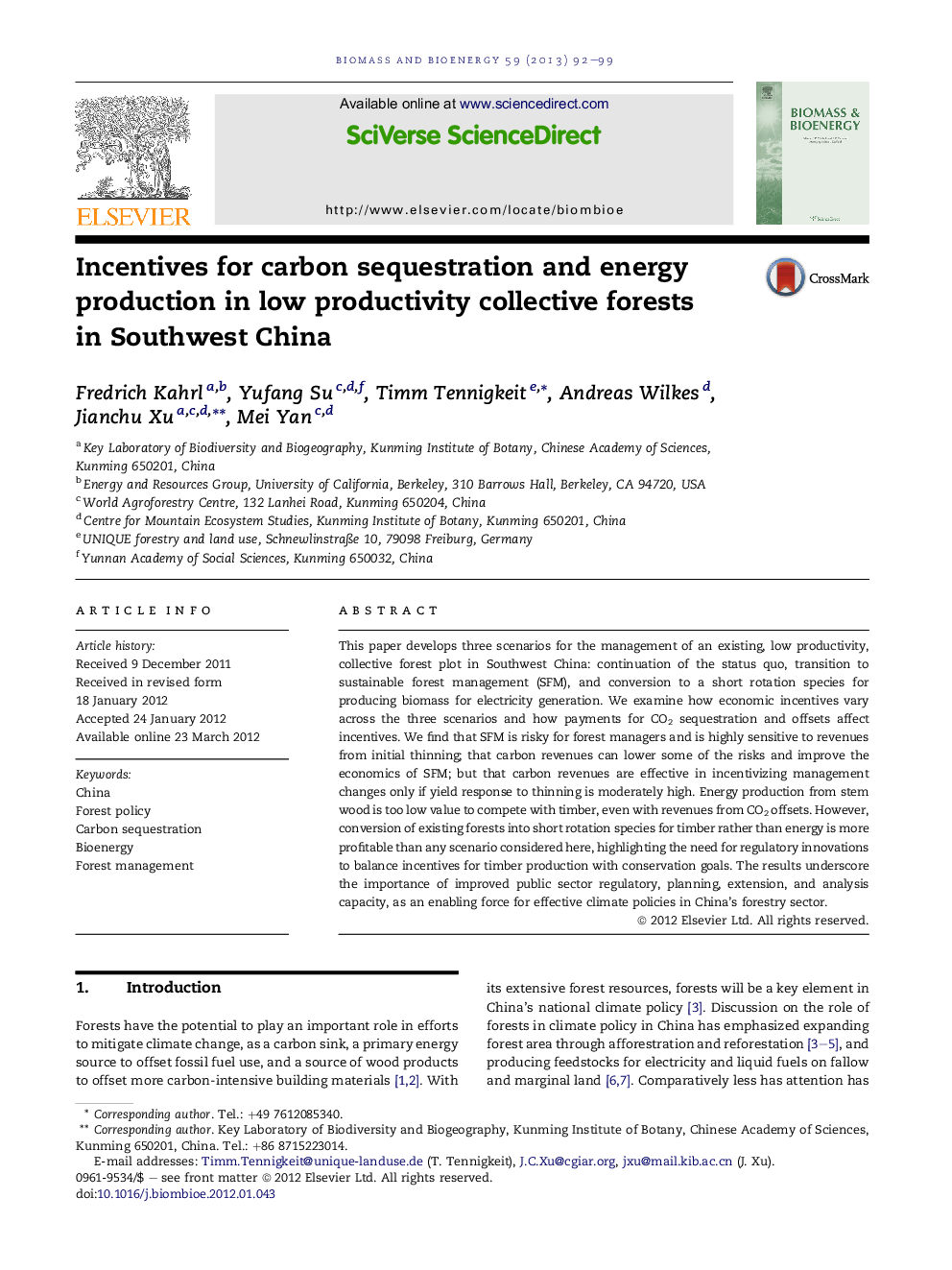| Article ID | Journal | Published Year | Pages | File Type |
|---|---|---|---|---|
| 677010 | Biomass and Bioenergy | 2013 | 8 Pages |
This paper develops three scenarios for the management of an existing, low productivity, collective forest plot in Southwest China: continuation of the status quo, transition to sustainable forest management (SFM), and conversion to a short rotation species for producing biomass for electricity generation. We examine how economic incentives vary across the three scenarios and how payments for CO2 sequestration and offsets affect incentives. We find that SFM is risky for forest managers and is highly sensitive to revenues from initial thinning; that carbon revenues can lower some of the risks and improve the economics of SFM; but that carbon revenues are effective in incentivizing management changes only if yield response to thinning is moderately high. Energy production from stem wood is too low value to compete with timber, even with revenues from CO2 offsets. However, conversion of existing forests into short rotation species for timber rather than energy is more profitable than any scenario considered here, highlighting the need for regulatory innovations to balance incentives for timber production with conservation goals. The results underscore the importance of improved public sector regulatory, planning, extension, and analysis capacity, as an enabling force for effective climate policies in China’s forestry sector.
► Sustainable forest management (SFM) is risky for forest managers. ► Carbon revenues can lower risks, improve incentives for SFM. ► Energy is too low value to compete with timber as a use of forest biomass. ► Climate policy increases demands on public sector capacity in China’s forest sector.
